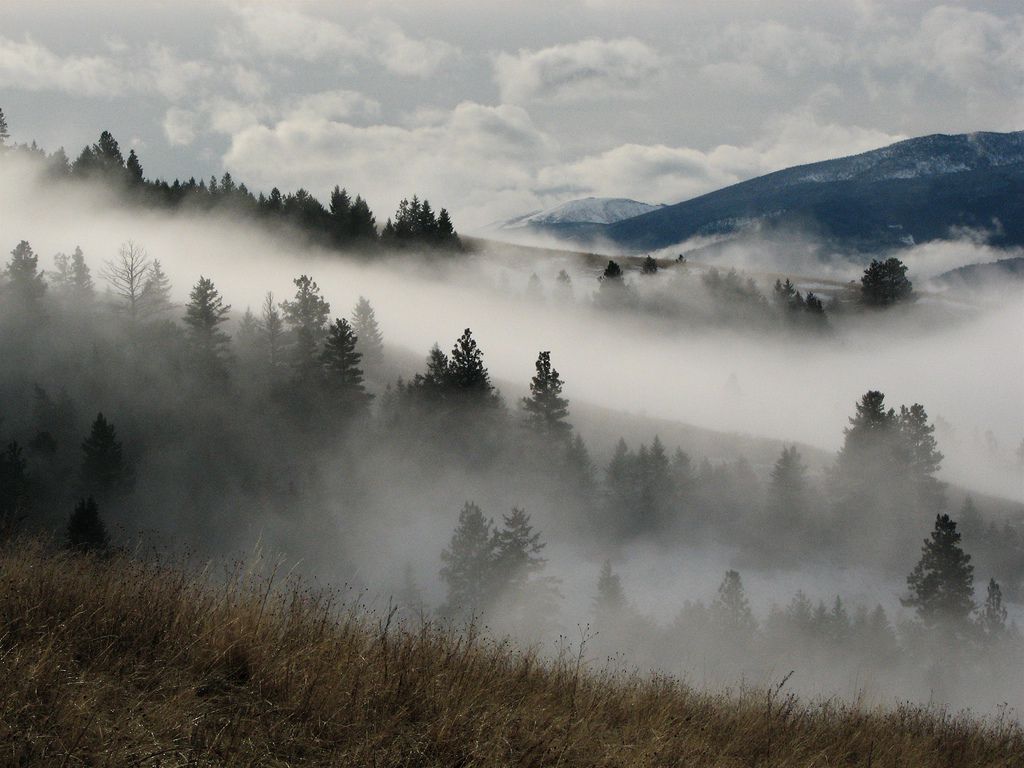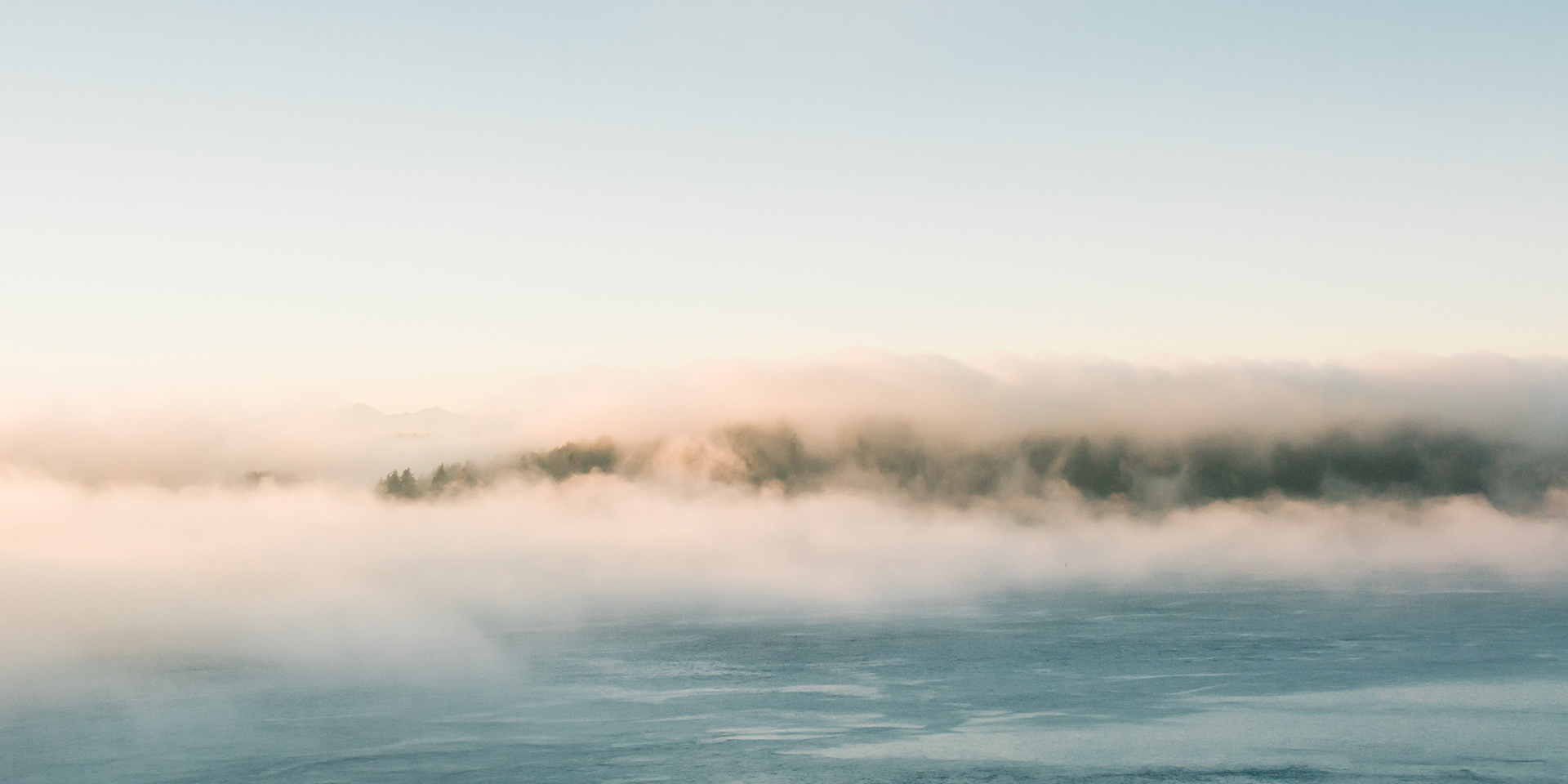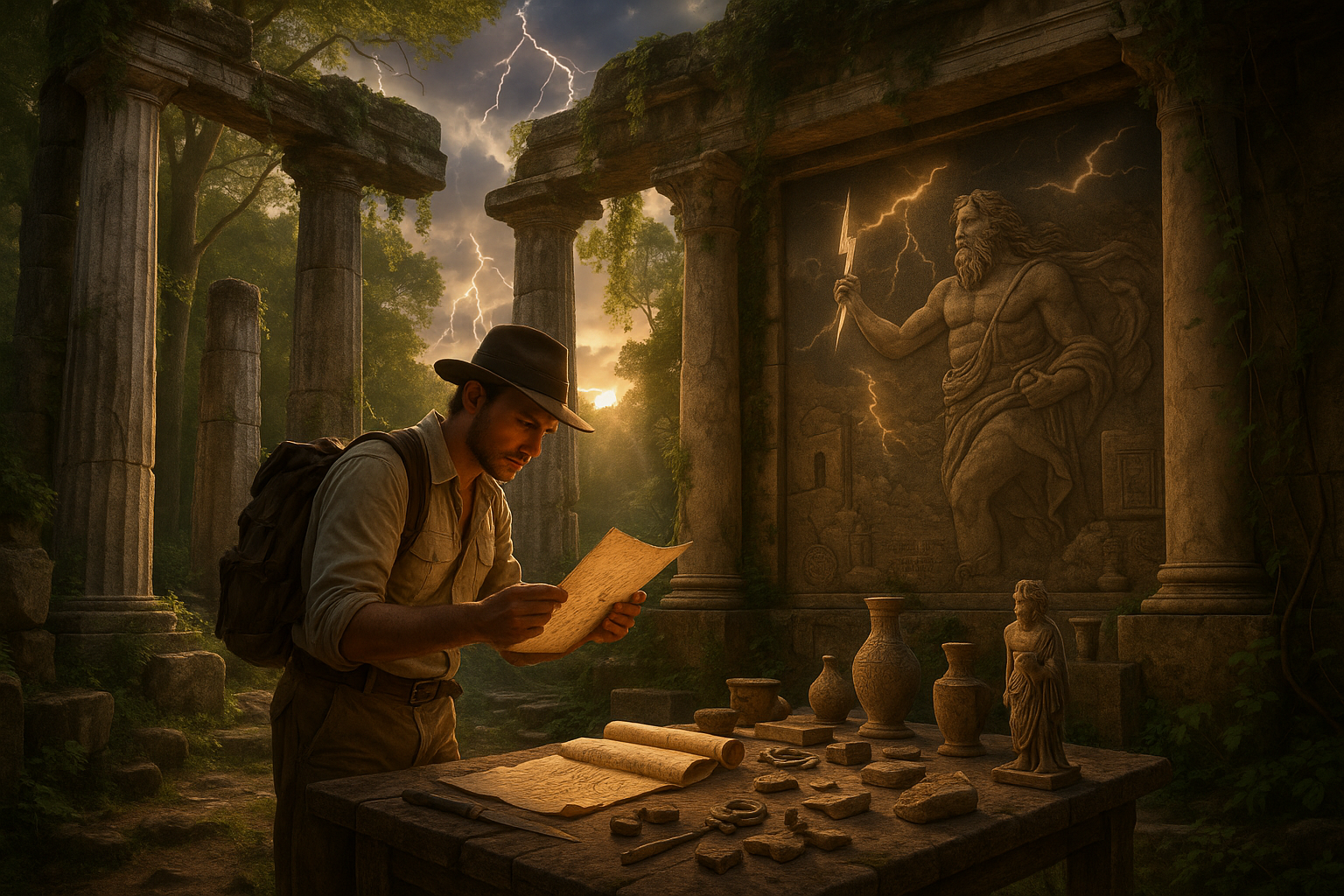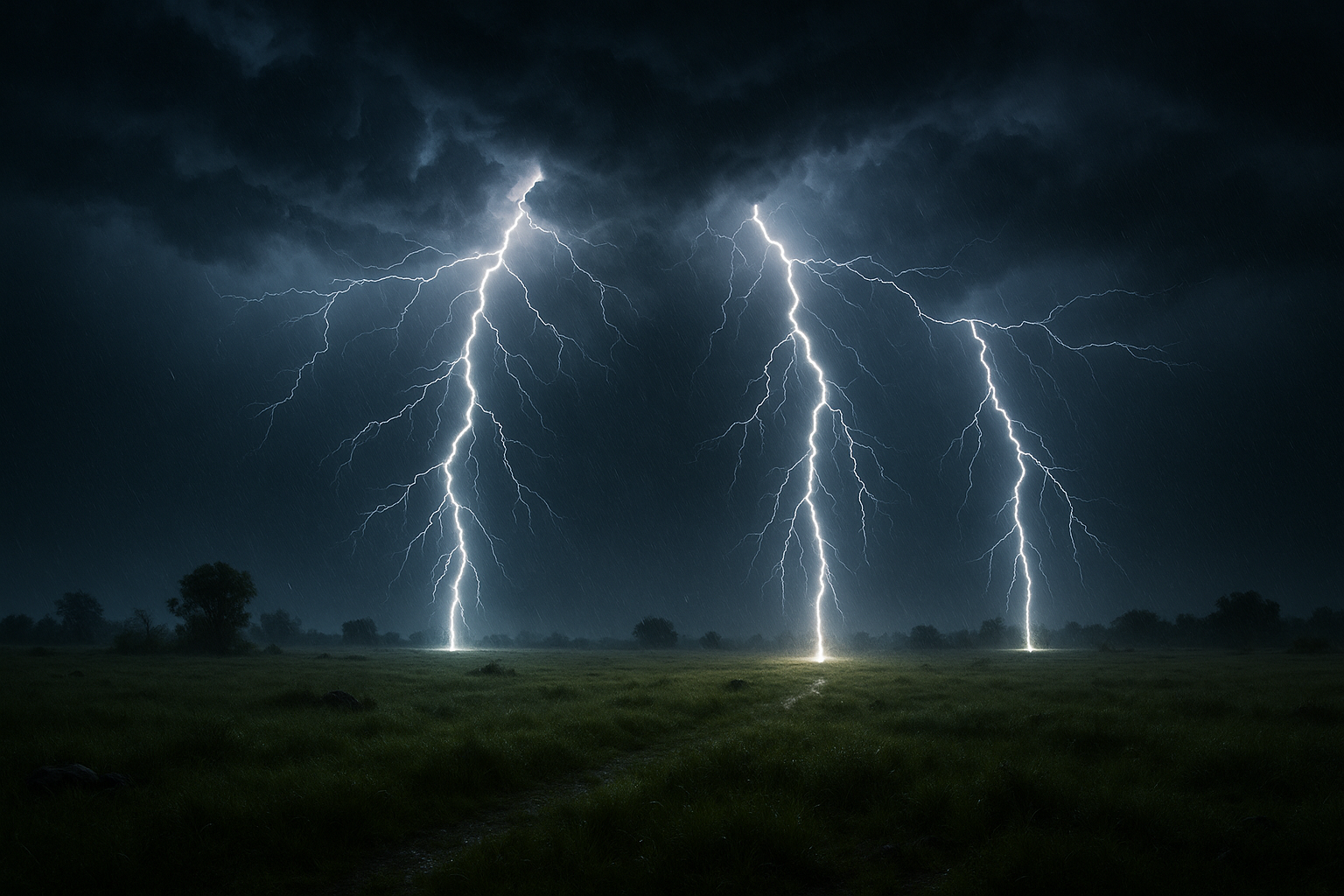In the realm of natural phenomena, few spectacles captivate the human imagination quite like the enigmatic shroud of fog. It dances over landscapes, enveloping them in an ethereal embrace that obscures and reveals, conceals and highlights. Among the many wonders it touches, one of the most captivating sights is the submersion of bridges in this misty cloak. These architectural marvels, typically seen as symbols of connection and triumph over nature’s barriers, take on a mysterious aura when enveloped in fog, blurring the line between reality and illusion. This phenomenon, though fleeting, offers a unique perspective on both engineering and nature, inviting us to pause and ponder.
As dawn breaks and the sun begins its ascent, bridges around the world transform into ghostly silhouettes suspended in a sea of clouds. The interplay between light and mist creates a scene that is both breathtaking and surreal, evoking feelings of wonder and introspection. But beyond its aesthetic allure, the submersion of bridges in fog raises intriguing questions about our relationship with nature and technology. How do these structures, designed for durability and function, interact with the ephemeral beauty of fog? What stories do they tell when hidden from view? And what can we learn from this delicate balance between human innovation and natural phenomena?
In this article, we will embark on a journey to explore the captivating phenomenon of bridge submersion in fog. We will delve into the science behind fog formation and its interaction with architectural structures, unraveling the delicate dance of meteorological conditions that lead to these breathtaking occurrences. We’ll also examine the cultural and artistic significance of these fog-covered bridges, exploring how they have inspired artists, photographers, and storytellers throughout history. By understanding the allure and mystery of this phenomenon, we can gain deeper insights into our own perceptions of the world around us.
Join us as we traverse the mist-laden paths of iconic bridges from around the globe, each with its own story to tell. From the Golden Gate Bridge in San Francisco to the Tower Bridge in London, we will uncover the secrets hidden within the fog and celebrate the artistry of nature’s touch. Whether you’re an engineering enthusiast, a lover of natural beauty, or simply someone curious about the interplay of man-made structures and the elements, this exploration promises to be both enlightening and inspiring. So, grab a cup of tea, settle into a comfortable chair, and prepare to be transported into a world where fog and steel meet in a dance of mystery and wonder. 🌫️✨
The Enigmatic Nature of Fog
Fog, a captivating meteorological phenomenon, often engulfs landscapes in a dense, mystical veil. It emerges when warm, moist air meets cooler temperatures, resulting in water vapor condensing into tiny droplets suspended in the air. This atmospheric event can dramatically alter the visibility and perception of our surroundings. As you delve deeper into the world of fog, you’ll discover the intriguing ways it interacts with man-made structures, such as bridges, creating scenes that are both eerie and breathtaking.
The process by which fog forms is intricately linked to various atmospheric conditions. It is most commonly observed in areas with high humidity, such as coastal regions, where the contrast between land and sea temperatures is significant. As the warm air from the ocean moves inland, it cools rapidly, leading to the condensation of water vapor and the formation of fog. This natural wonder can vary in density and persistence, sometimes lasting for mere hours, while at other times, it can blanket an area for days.
Understanding fog’s impact on our environment requires a closer look at how it affects visibility and perception. When fog descends, it reduces visibility significantly, often leading to transportation disruptions and safety hazards. This is particularly evident when fog envelops bridges, where the combination of reduced visibility and the structure’s elevation creates a unique and often challenging situation for drivers and pedestrians. The interplay between fog and bridges not only fascinates meteorologists but also captures the imagination of artists and photographers who seek to capture its ethereal beauty.
The Impact of Fog on Bridges
When fog envelops a bridge, it transforms the structure into a ghostly silhouette, shrouded in mystery. This phenomenon can have significant implications for both the functionality of the bridge and the safety of those who traverse it. The reduced visibility caused by fog can obscure critical visual cues, making navigation treacherous for motorists and challenging for maintenance crews tasked with ensuring the bridge’s safety.
Bridges are often constructed in areas prone to fog, such as coastal regions or river valleys, where the temperature variations necessary for fog formation are more pronounced. This makes them particularly susceptible to the challenges posed by fog. The Golden Gate Bridge in San Francisco, for instance, is renowned for its frequent immersion in fog, a characteristic that has become part of its iconic image. While this adds to the bridge’s allure, it also requires extensive safety measures to ensure the well-being of travelers.
The impact of fog on bridges extends beyond safety concerns. The aesthetic transformation of a bridge cloaked in fog can evoke a sense of wonder and mystery. Photographers and artists are drawn to these scenes, capturing the interplay between the solid, man-made structure and the ephemeral nature of fog. This relationship highlights the delicate balance between human engineering and the natural world, reminding us of the beauty and power of nature.
Safety Measures and Technological Advances
To mitigate the risks associated with fog on bridges, engineers and city planners have implemented various safety measures and technological advancements. These innovations aim to enhance visibility and provide real-time information to travelers, ensuring safe passage even in adverse weather conditions. Understanding these measures can offer valuable insights into how we navigate and adapt to the challenges posed by fog.
One of the primary strategies employed to improve safety on fog-affected bridges is the installation of advanced lighting systems. These systems utilize LED lights and reflective materials to enhance visibility, allowing drivers to better perceive the road ahead. Additionally, some bridges are equipped with foghorns or sirens that emit audible signals to alert drivers of reduced visibility conditions. These auditory cues serve as a valuable supplement to visual indicators, providing an additional layer of safety.
In recent years, technological advancements have further bolstered our ability to manage fog-related challenges. The integration of weather monitoring systems and real-time data analytics allows for more accurate predictions of fog events. This information is crucial for traffic management and emergency response teams, enabling them to make informed decisions and implement necessary precautions promptly. Moreover, the development of autonomous vehicle technology holds promise for navigating fog-enshrouded bridges, as these vehicles are equipped with sensors and artificial intelligence capabilities that enhance their ability to operate in low-visibility conditions.
| Safety Measure | Description |
|---|---|
| Advanced Lighting Systems | Utilize LED lights and reflective materials to enhance visibility on fog-affected bridges. |
| Weather Monitoring Systems | Provide real-time data on fog conditions to aid traffic management and emergency response teams. |
| Autonomous Vehicle Technology | Equipped with sensors and AI capabilities to navigate in low-visibility conditions. |
Challenges in Implementing Safety Measures
While significant strides have been made in improving safety on fog-affected bridges, several challenges persist. One of the primary obstacles is the cost associated with implementing and maintaining advanced safety systems. The installation of high-tech lighting and monitoring equipment can be financially demanding, particularly for older bridges that require retrofitting. This financial burden often necessitates prioritization and careful allocation of resources to ensure the most critical safety measures are implemented.
Another challenge lies in the variability of fog conditions, which can make it difficult to predict and respond to fog events accurately. Fog can form and dissipate rapidly, requiring real-time data collection and analysis to provide timely warnings and updates to travelers. This dynamic nature of fog necessitates a robust infrastructure capable of handling and disseminating information efficiently, a task that demands continuous investment in technology and communication networks.
Despite these challenges, the commitment to improving safety on fog-affected bridges remains a priority for engineers, policymakers, and communities. The ongoing development of innovative solutions and the integration of cutting-edge technology hold promise for enhancing the safety and functionality of bridges immersed in fog, ultimately ensuring that these vital structures continue to serve as safe and reliable conduits for transportation.
Fog’s Cultural and Artistic Influence
Fog’s enigmatic presence extends beyond its meteorological implications, deeply influencing culture and the arts. The ethereal quality of fog has inspired countless artists, writers, and filmmakers, who seek to capture its elusive beauty and symbolic meaning. Through various mediums, fog has been portrayed as a metaphor for mystery, uncertainty, and introspection, resonating with audiences across the globe.
In literature, fog often serves as a powerful narrative device, symbolizing ambiguity and the unknown. Authors have employed fog to create atmospheres of suspense and tension, using it to shroud characters and events in uncertainty. This literary technique enhances the emotional impact of a story, inviting readers to explore the hidden depths of the narrative and the complexities of human experience.
- Fog as a metaphor for mystery and uncertainty in literature.
- The challenge of capturing fog in visual arts.
- Fog’s influence on film and photography.
Fog in Film and Photography
In film and photography, fog is often used to create a specific mood or atmosphere, enhancing the visual storytelling experience. Directors and cinematographers leverage fog to obscure or reveal elements of a scene, guiding the audience’s attention and evoking emotional responses. The use of fog in film noir, for instance, is a classic example of how this atmospheric element can contribute to the genre’s characteristic mood of intrigue and suspense.
Photographers, on the other hand, are captivated by the challenge of capturing the transient beauty of fog. The interplay between light and mist creates a dynamic canvas that demands skill and creativity to capture effectively. Whether photographing a fog-enshrouded landscape or a solitary figure emerging from the mist, photographers must navigate the delicate balance between clarity and ambiguity, crafting images that resonate with viewers on an emotional level.
For an immersive visual experience of fog in photography, you can watch the video “Fog Photography Tips and Techniques” by Visual Art Photography School on YouTube. It offers practical insights into capturing stunning fog images, providing inspiration for both amateur and professional photographers. Watch the video here.
The pervasive influence of fog in culture and the arts underscores its significance as more than a meteorological phenomenon. It serves as a powerful symbol and source of inspiration, inviting us to explore the depths of our imagination and the complexities of the human experience. As fog continues to captivate our senses, it reminds us of the beauty and mystery inherent in the natural world, encouraging us to embrace the unknown with curiosity and wonder.
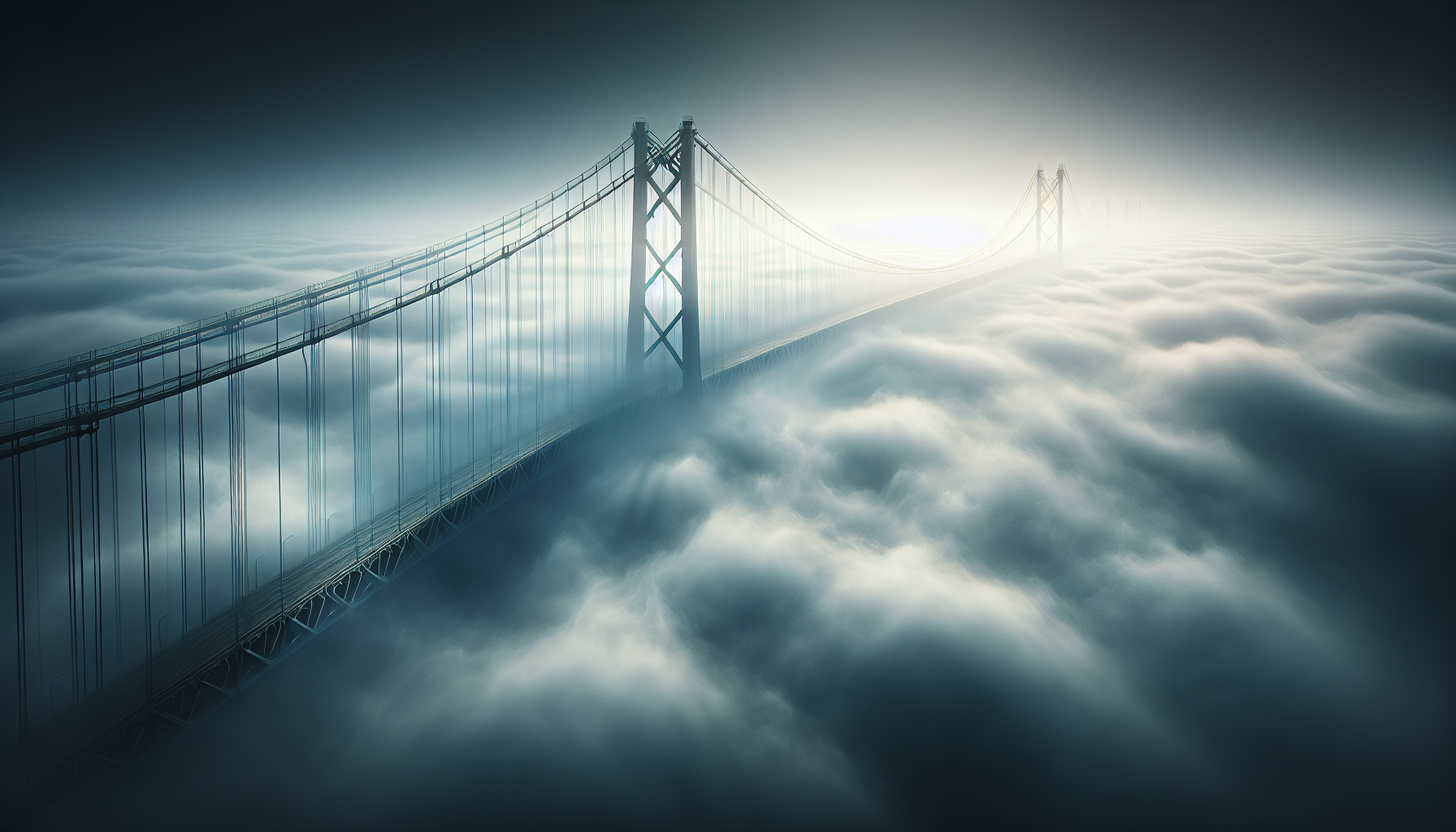
Conclusion
In conclusion, the captivating phenomenon of bridge submersion in fog offers a fascinating intersection of natural beauty and engineering marvel. Throughout the article, we have explored the scientific principles that lead to the formation of fog and how it interacts with large structures like bridges. Fog, a collection of water droplets or ice crystals suspended in the air, occurs when the air becomes saturated with moisture. This atmospheric condition is not only a meteorological event but also a significant factor in influencing human experiences and perceptions of the environment.
Bridges, as monumental feats of engineering, become hidden beneath the ethereal blanket of fog, creating scenes that evoke both mystery and awe. From the Golden Gate Bridge in San Francisco to the Humber Bridge in the UK, these structures illustrate how human innovation meets nature’s unpredictable patterns. The submersion of bridges in fog highlights the delicate balance between man-made structures and natural forces, reminding us of the profound impact weather can have on our surroundings.
One of the key aspects we examined is the role of fog in affecting visibility and safety. Fog can severely limit a driver’s ability to see, increasing the risk of accidents on bridges and surrounding roads. As such, understanding the dynamics of fog is crucial for implementing safety measures, such as fog horns, warning lights, and variable message signs, to ensure the safety of commuters. It also emphasizes the importance of modern technology in predicting fog conditions, thereby allowing authorities to take preemptive actions to mitigate potential hazards.
Moreover, the aesthetic allure of fog-covered bridges has captured the imagination of artists, photographers, and storytellers throughout history. The shrouded appearance of a bridge in fog has become a powerful metaphor in literature and visual arts, symbolizing mystery, transition, and the unknown. This artistic perspective invites us to appreciate the beauty and serenity that such natural phenomena can bring to otherwise bustling urban landscapes.
The environmental implications of fog are another critical point of discussion. As climate change continues to alter weather patterns globally, the frequency and distribution of fog events may change. This could have profound effects on local ecosystems, transportation networks, and even the cultural identity of regions where fog is a defining characteristic. Thus, ongoing research and environmental monitoring are essential to adapt to these potential changes and preserve the intricate balance between nature and human development.
The phenomenon of bridge submersion in fog serves as a reminder of the intrinsic connection between humans and nature. It challenges us to look beyond the surface and appreciate the complex interplay of factors that shape our environment. As we continue to explore and understand these interactions, it is crucial to maintain a sense of curiosity and respect for the natural world.
We encourage you, our readers, to reflect on your own experiences with fog-covered bridges and consider the broader implications of this phenomenon. Share your thoughts and stories in the comments section, and engage with others to foster a deeper understanding of this intriguing subject. Additionally, sharing this article with your network can help spread awareness and appreciation for the fascinating interplay between engineering and nature.
For those interested in further exploration, several resources provide valuable insights into the science and art of fog and bridges. Websites such as the National Weather Service https://www.weather.gov/ and the American Society of Civil Engineers https://www.asce.org/ offer a wealth of information on meteorology and engineering. We also recommend visiting photography galleries or exploring online platforms like Flickr or Instagram, where photographers share stunning images of fog-enshrouded bridges.
In conclusion, the mesmerizing spectacle of bridges vanishing into fog serves as a testament to the beauty and complexity of our world. By understanding and appreciating this phenomenon, we not only enhance our knowledge but also cultivate a greater respect for the natural forces that shape our daily lives. Let us continue to marvel at and learn from these encounters, using them as inspiration to bridge the gap between human achievement and the natural wonders that surround us. 🌁
Thank you for joining us on this journey through the mist!
Toni Santos is a visual storyteller and artisan whose creations celebrate the poetry of the natural world. Through his thoughtful artistic lens, Toni captures the elegance of botanical forms, transforming them into meaningful expressions of symbolism, resilience, and timeless beauty.
His journey is deeply rooted in a passion for flora and the mysteries they carry. From the shape of a petal to the curve of a vine, each design Toni brings to life reflects a deeper narrative — one of growth, transformation, and harmony with nature. Whether crafting symbolic floral jewelry, enchanted botanical illustrations, or seasonal visual studies, Toni’s work evokes the quiet magic found in Earth’s most delicate details.
With a background in handcrafted artistry and visual design, Toni blends technique with intention. His creations do more than decorate — they speak, often inspired by ancient meanings behind flowers, the cycles of the seasons, and the invisible bonds between nature and spirit.
As the creative voice behind Vizovex, Toni shares this botanical journey with the world, offering curated stories, handcrafted collections, and thoughtful articles that help others reconnect with nature’s symbolism and artistic essence.
His work is a tribute to:
The quiet power of flowers and their messages
The art of visual symbolism in everyday life
The beauty of slowing down to see what’s hidden in plain sight
Whether you’re an artist, a nature lover, or someone drawn to the deeper meanings behind the natural world, Toni welcomes you to explore a space where aesthetics meet soul — one petal, one story, one creation at a time.


